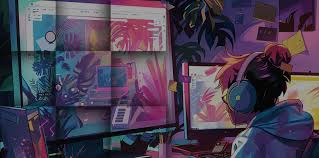The stunning worlds in video games are the product of a highly structured, collaborative process: the game art pipeline. This production line is a step-by-step roadmap that transforms a simple idea into a fully realized, optimized, and interactive asset.
For developers, understanding this pipeline is crucial for managing production and ensuring quality. It’s the core methodology used by every professional game art outsourcing studio to deliver consistent, high-quality assets efficiently. While specifics vary, the core phases remain the same. This is the journey from imagination to implementation.
Phase 1: Pre-Production & Concept Art
Every asset begins as an idea. This phase establishes the visual blueprint for the entire project.
- Brainstorming & Mood Boards: The team gathers references and stylistic examples to define the overall look and feel.
- Concept Art: Concept artists create detailed illustrations of characters, environments, and props. These are not just pictures; they are technical guides that inform the 3D artists about shape, color, texture, and personality.
Phase 2: Production – Building the Assets
With a clear visual direction, the production team begins building the assets. This is the core of game art services, especially for 3D art.
- Modeling: Using software like Blender or Maya, an artist builds the 3D shape. This involves creating a detailed “high-poly” model for visual fidelity and a “low-poly” version that is efficient enough to run in the game engine.
- UV Unwrapping: The 3D model is digitally “unwrapped” into a flat 2D map. This map dictates how textures are applied to the model’s surface.
- Texturing & Shading: The artist paints the model’s colors and material properties (e.g., roughness, metallicity). Details from the high-poly model are “baked” onto the low-poly model using a normal map, creating the illusion of high detail on a performance-friendly asset.
- Rigging & Animation: For moving assets like characters, a digital skeleton (“rig”) is built inside the model. Animators then use this rig to create all in-game movements.
Phase 3: Implementation & Optimisation
The final step is bringing the asset into the game engine.
- Importing to Engine: Completed models, textures, and animations are imported into an engine like Unreal or Unity.
- Material & Lighting Setup: Artists configure the asset’s materials to react realistically to the game’s lighting.
- Optimisation: A crucial final check ensures the asset meets performance targets, making adjustments to polygons or textures as needed.
This intricate pipeline is why many developers choose to outsource game art. Leveraging an art outsourcing studio provides access to a team of specialists for each stage, ensuring every asset is crafted efficiently and to the highest technical and artistic standards, particularly for complex projects like mobile game art outsourcing.
read more : https://webenterpreneurs.com/

